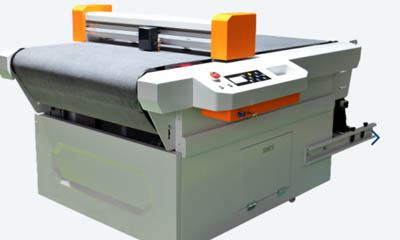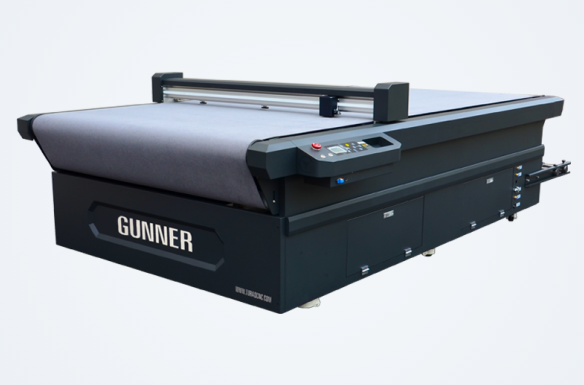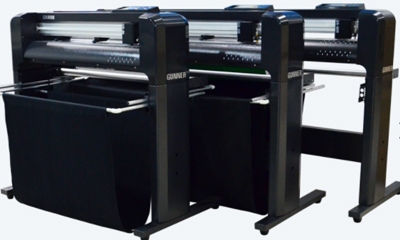Flatbed digital cutters are post-press processing equipment, which is used in the advertising printing graphic industry. Flatbed digital cutters called digital sample cutters, automatic die-cutting indentation machines, flat die-cutting machines, and similar functions, are for advertising printing material cutting.
Die-cutting is often used to create unique shapes from rubber, plastic, and foam materials.
Before starting a die-cutting project, it's important to discuss all the specific project requirements - including whether rotary or flatbed die-cutting is best for the job. Each cutting method has its own unique advantages, depending on product size, cost, and material.
What is rotary die-cutting?
Key benefits: maintains tight tolerances, ideal for kiss cutting
Best for high-volume orders
How it works: Rotary die-cutting is a highly accurate cutting method that is very cost-effective on high volume orders and generates less waste than other methods. As shown in the video, the machine is fed a roll of material, which is then passed through a roll die. This cuts the desired shape from the material and disposes of the waste in a collector.
Flatbed Digital Cutter
What is flatbed die cutting?
Key Benefits: Provides more cost-effective options and reduces tool and die costs
Best for General cutting and low volume orders
How it works: With flatbed die cutting, material shapes are stamped out using steel ruler dies and hydraulic presses. This method allows for easy removal of holes and webs from the part, along with quick changeovers for efficiency.
Flatbed die cutting is the process of cutting or perforating the desired shape from the material using a hydraulic flatbed press.
In general, flatbed die-cutting is suitable.
Consistent cuts for small lot items
Larger size products
Cutting products from sheet material
High precision cutting of materials over 1/8" thick
Projects where tooling costs must be kept to a minimum
Multi-process projects; rotary die-cutting can be combined with coating, embossing, creasing, laminating, and other processes
Flatbed Digital Cutter
Presses for flatbed die-cutting
Flatbed die-cutting presses allow for very high-precision cutting of materials thicker than 1/8 inch. Unlike the circular cuts produced by rotary die-cutting presses, flatbed cuts are perpendicular to the death bed. The cut is sharper and more defined. Flatbed dies cutters can accommodate larger materials. Steel ruler dies are easier to change, so they are more efficient when cutting multiple shapes.
Compared to other die-cutting processes—e.g., rotary die-cutting and laser cutting—flatbed cutting is more suitable for processing thicker material, producing larger parts, and completing small orders or short production runs. However, while flatbed dies cutting demonstrates some advantages over rotary die cutting and laser cutting, some manufacturing applications are better suited to these other die-cutting processes, such as high-precision, intricate design, or large-run part production. The requirements and specifications demanded by a particular die-cutting application—e.g., materials, sizing, tolerances, costs, turnaround times, etc.—help determine the type of die-cutting process most suitable to use for it.
Die-cutting with Gunner products
Gunner's team of engineers ensures that the right die-cutting machine is used to meet your project needs. Our die-cut products from a variety of flexible non-metallic materials are available in continuous rolls, sheets, or individual parts to meet your unique application.
Ready to get started? Visit our website to find your material and contact us about your next project.



没有评论:
发表评论